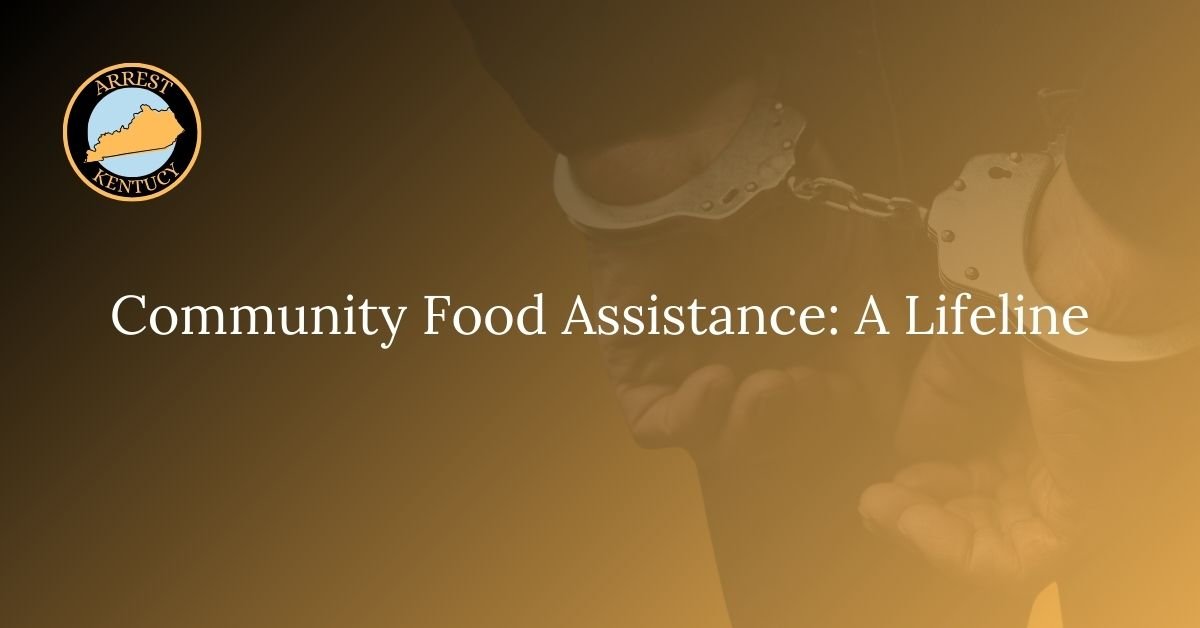Community Food Assistance: A Lifeline

Access to sufficient and nutritious food is a fundamental human right, yet many individuals and families face the persistent challenge of food insecurity. In Kentucky, as in numerous other regions, there are people who struggle to afford enough food to meet their daily needs. Food banks and assistance programs play a crucial role in addressing this issue by offering essential resources and support to ensure that no one is left hungry. These organizations help bridge the gap between surplus food and those in need, providing a lifeline for many who would otherwise go without. By distributing food and resources to individuals and families, food banks and assistance programs work to alleviate the burden of hunger and improve the overall well-being of their communities.
This guide aims to emphasize the significance of food banks and assistance programs, providing a comprehensive overview of how these resources support communities. It explores the impact these programs have on addressing food insecurity, highlighting their vital role in ensuring that every individual has access to adequate and nutritious food. By understanding the mechanisms and benefits of these programs, we can better appreciate their role in fostering a more equitable and supportive community.
Understanding Food Insecurity
Food insecurity is a severe and distressing issue affecting millions of people both globally and within Kentucky. It describes the condition in which individuals or families lack reliable access to sufficient and nutritious food, which can lead to a range of negative health outcomes. In Kentucky, the prevalence of food insecurity reflects broader economic and social challenges, including poverty, unemployment, and limited access to resources. This section provides a detailed examination of what food insecurity entails, offering insights into its causes and consequences. By recognizing the extent of the problem, we can better understand the importance of food assistance programs and work towards comprehensive solutions that address the root causes of food insecurity.
How Food Banks Support Communities
Food banks serve as central hubs in the fight against hunger, playing a vital role in alleviating food insecurity within communities. These organizations collect, store, and distribute food to those in need, acting as a crucial link between food donors and recipients. Food banks often collaborate with local agencies, non-profits, and volunteers to ensure that food is efficiently distributed and reaches those who need it most. The process involves sorting and packing food items, coordinating distribution efforts, and managing logistics to ensure that the assistance provided is effective and timely. Through these efforts, food banks help to address the immediate needs of individuals and families while also fostering a sense of community support and solidarity.
Government Programs for Food Support
Government assistance programs are designed to alleviate food insecurity and enhance access to nutrition for those in need. Programs such as the Supplemental Nutrition Assistance Program (SNAP) and the Women, Infants, and Children (WIC) Program play a critical role in providing financial support for purchasing food. SNAP, formerly known as food stamps, offers eligible individuals and families monthly benefits to help cover the cost of groceries, while WIC provides targeted support to pregnant women, infants, and young children. Additionally, school meal programs offer essential nutrition to children, ensuring that they receive balanced meals during the school day. These government programs are integral to addressing food insecurity, providing vital support that helps improve overall health and well-being.
Local Initiatives for Food Assistance
Beyond government programs, local and community-based initiatives also play a crucial role in addressing food insecurity. Community pantries and mobile food distributions offer valuable support by providing food directly to underserved populations. These initiatives are often driven by local organizations and volunteers who are committed to helping their neighbors. Meal delivery programs also offer essential assistance to individuals who may have limited mobility or face other challenges that prevent them from accessing traditional food distribution sites. By reaching out to those in need through various channels, local initiatives contribute significantly to ensuring that food security is maintained within the community.
Food Assistance During Emergencies
In times of crisis, such as natural disasters or pandemics, the role of food assistance programs becomes even more critical. During emergencies, these programs provide immediate food aid and temporary support to individuals and families facing unforeseen challenges. Effective response plans are essential to ensure that resources are distributed efficiently and that those affected by crises receive the help they need. Food banks and assistance programs often collaborate with government agencies, relief organizations, and community groups to coordinate efforts and respond to emergency situations. By having robust contingency plans in place, communities can better navigate the complexities of crisis situations and provide timely support to those in need.
Frequently Asked Questions
For detailed FAQs about community food assistance, please refer to the comprehensive resources available on your website.
What is a food bank?
A food bank is a nonprofit organization dedicated to collecting, storing, and distributing food to individuals and families experiencing food insecurity. These organizations function as central distribution centers, receiving food donations from various sources such as grocery stores, manufacturers, and individual donors. Once collected, the food is sorted and distributed to local agencies, food pantries, and directly to those in need. By acting as a hub for food resources, food banks help ensure that essential nutrition reaches those who require assistance.
Who is eligible for food assistance?
Food banks aim to assist anyone facing food insecurity, regardless of their age, gender, race, or religion. Eligibility for food assistance is generally based on need rather than specific demographic criteria. Individuals and families experiencing difficulties in meeting their food needs are encouraged to reach out to their local food bank or affiliated agencies for support. The goal is to provide help to all those who are struggling to access adequate and nutritious food.
How can I locate a food bank or assistance program?
To find a food bank or assistance program in your area, you can use online resources by searching with your city or ZIP code. Many food banks have websites that provide information on their locations and services. Additionally, local social service agencies, community centers, and government offices can offer referrals and details on available food assistance programs. These resources can help connect you with the support you need.
What foods do food banks provide?
Food banks distribute a diverse range of food items to meet the needs of their recipients. This includes both non-perishable items, such as canned goods, dry grains, pasta, and rice, as well as perishable items like fresh fruits, vegetables, dairy products, and bread. Some food banks also provide personal care items and hygiene products. The goal is to offer a well-rounded selection of foods that can support a balanced diet and meet the nutritional needs of individuals and families.
Can I contribute to a food bank? What items are needed?
Yes, food banks welcome donations from individuals and businesses. Contributions are crucial for maintaining their operations and ensuring a steady supply of food for those in need. The most needed items often include non-perishable foods with long shelf lives, such as canned goods, peanut butter, rice, pasta, cereal, and canned proteins like tuna or chicken. Donations help supplement the resources available and support the continued operation of food assistance programs.
Are food banks only for the homeless?
Food banks are not solely for the homeless; they serve anyone experiencing food insecurity. This includes low-income families, single parents, seniors on fixed incomes, students, and individuals facing unexpected financial hardships. Food banks aim to provide assistance to a broad range of people who are struggling to obtain enough food, ensuring that support is available to those in various situations of need.






